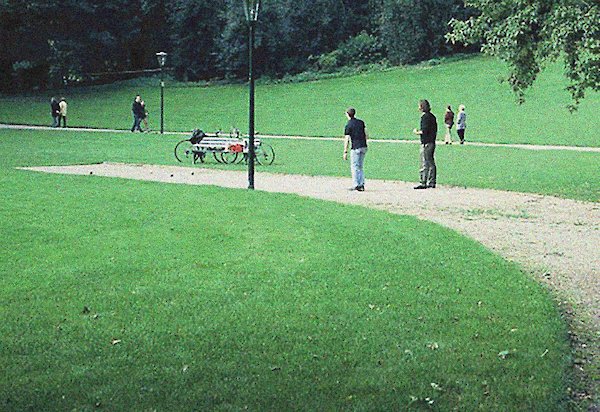Speakers
Lilli Lička
Head of ILA, Institute of Landscape Architecture, BOKU Vienna and koselička. Investigating landscape architecture in urbia and suburbia as scholar and practitioner, teaching at the BOKU, heading the institute of landscape architecture at BOKU since 2003, founder and partner of koselička, landscape architects, Vienna since 1991.
Landscape x—Periments
About landscapearchitectural design approaches.
Experiments can be conducted for several reasons. Some are carried out in (chemical) laboratories, some for psychological tests, some in situ. Neither of those situations is a regular part of the design process in landscape architecture. There might, however, be an interrelation between innovation and experiment in landscape architecture.
Design theory is dealing with different states and processes within the production of new landscapes. Landscape is a cultural product. Definitions adapt to alteration, which has also happened to the term ‘landscape’: Even if it had emerged from the differentiation between “land” and “city”, thus the rural and the urban, this dichotomy is now resolving as the borders between the two are blurred in many ways. ‘Scapes’ in this respect are evolving from the holistic approach of architecture and landscape. Whereas architects and planners had looked at landscape as the opposite to building, perhaps even as the prospect, the background to their product, the term landscape is now used for the entity of both built up and non-built-up areas. As shown through recent discussions, through a number of publications and lectures, ‘landscape’ has become newfangled within the design world due to the blurring of definitions.We see landscape architecture as a field of cultural production. Landscape exists of physical layers as well as of layers of different social and cultural significance. Its natural basis is of course determining the potentials for design and usage. The cultural dimension is not restricted to beauty, esthetics or beaux-arts. It carries individual and collective imprints, sociocultural definitions and behaviour. It is furthermore dependant on political priorities and monetarian restrictions. The recent development of these factors ask for innovation as well in design solutions as in design processes and their theoretical reflections. Moreover landscape is not static but is a continuous process of alteration and development.
As landscape architects we interfere in this proces. A lot has been written about design methods in landscape architectural literature (see Swaffield 2002, Prominski 2004, Vroom 2006). The processes are described as an iterative linear or circular sequence of steps from research via analysis towards synthesis.
Synthesis being a ‘logical’ outcome as a design for the place. Is exploration the only key to ‚right‘ solutions? In the lecture several questions are risen in respect to possible roles of experiments in design processes, design theory and landscape architectural aprroaches to contemporary tasks of landscape and public spaces.
